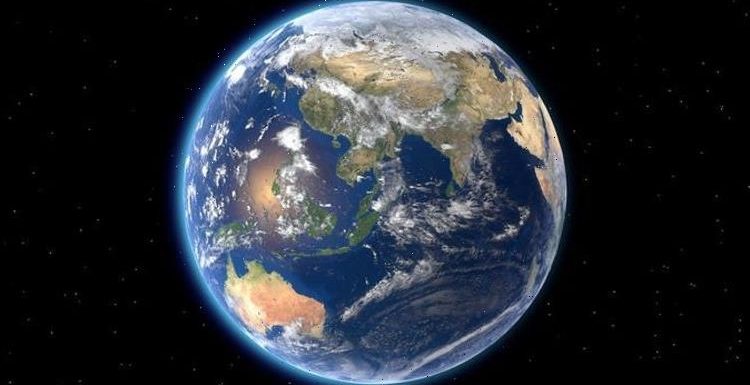
NASA reveals life on earth with incredible animation
We use your sign-up to provide content in ways you’ve consented to and to improve our understanding of you. This may include adverts from us and 3rd parties based on our understanding. You can unsubscribe at any time. More info
Ever since its formation around 4.5 billion years ago, the Earth’s rotation has been gradually slowing down, and its days have progressively become longer as a result. While unnoticeable to humans, it is apparently enough to work significant changes to our environment. New research suggests that the lengthening of days can be linked to increased oxygenation of Earth’s atmosphere.
Specifically, the blue-green algae called cyanobacteria that emerged and proliferated about 2.4 billion years ago may have been able to produce more oxygen because Earth’s days grew longer.
Microbiologist Gregory Dick, of the University of Michigan, said: “An enduring question in Earth sciences has been how did Earth’s atmosphere get its oxygen, and what factors controlled when this oxygenation took place.
“Our research suggests that the rate at which Earth is spinning – in other words, its day length – may have had an important effect on the pattern and timing of Earth’s oxygenation.”
The reason the Earth’s spin is slowing down is because the Moon exerts a gravitational pull on the planet, which causes a rotational deceleration.


We know, based on the fossil record, that days were just 18 hours long 1.4 billion years ago, and half an hour shorter than they are today 70 million years ago.
Evidence suggests that we’re gaining 1.8 milliseconds a century.
The second component is something known as the Great Oxidation Event – when cyanobacteria emerged in such great quantities that Earth’s atmosphere experienced a sharp, significant rise in oxygen
Experts even theory that life as we know it may not have emerged without this event.

Their study, which was published yesterday in Nature Geoscience, proposes and puts to the test the theory that longer, continuous daylight kick-started weird bacteria into producing lots of oxygen, making most of life as we know it possible.
They dredged up the gooey bacteria from a deep sinkhole in Lake Huron in North America and tinkered with how much light it got in lab experiments.
The more continuous light the smelly microbes got, the more oxygen they produced.
Researchers believe there may have been similar competitions between communities of microbes billions of years ago, with oxygen-producing bacteria’s sunlight exposure hampered by their microbial neighbours.
DON’T MISS
Black hole shock: Scientist’s dire warning to humans [VIDEO]
Asteroid apocalypse: Scientist warns of ‘city-destroying’ space rock [OPINION]
Why ‘Trillion tonne rock hurtling towards Earth’ was ‘bad news’ [EXPLAINED]


They concluded that Earth’s slowing rotation, which gradually lengthened days from six hours to the current 24 hours, was key for the cyanobacteria in making the planet more breathable.
Study lead Judith Klatt added: “We realised that there is a fundamental link between light dynamics and release of oxygen and that link is grounded in the physics of molecular diffusion.
“A shorter day would allow less oxygen to escape a mat, even if the same amount of oxygen is produced per hour.”
Source: Read Full Article